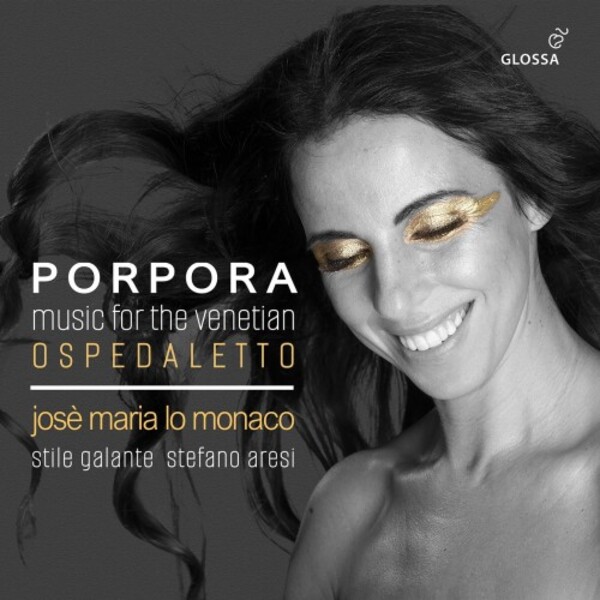PORPORA Music for the Venetian Ospedaletto
View record and artist detailsRecord and Artist Details
Genre:
Vocal
Label: Glossa
Magazine Review Date: 05/2024
Media Format: CD or Download
Media Runtime: 68
Mastering:
DDD
Catalogue Number: GCD923537

Tracks:
| Composition | Artist Credit |
|---|---|
| Placida surge, Aurora |
Nicola (Antonio) Porpora, Composer
José Maria Lo Monaco, Mezzo soprano Stefano Aresi, Conductor Stile Galante |
| Salve Regina |
Nicola (Antonio) Porpora, Composer
José Maria Lo Monaco, Mezzo soprano Stefano Aresi, Conductor Stile Galante |
| Concerto for Cello and Strings |
Nicola (Antonio) Porpora, Composer
Agnieszka Oszanca, Cello Stefano Aresi, Conductor Stile Galante |
| Qualis avis cui perempta |
Nicola (Antonio) Porpora, Composer
José Maria Lo Monaco, Mezzo soprano Stefano Aresi, Conductor Stile Galante |
Author: David Vickers
Plenty of eminent teachers and composers beyond Vivaldi had close links to the four Venetian ospedali grandi, the Pietà, Incurabili, Mendicanti and Dereletti (known colloquially as the Ospedaletto). These charitable foundations provided care for vulnerable and abandoned people, and by the early 18th century each institution encouraged musical excellence among a portion of its female residents. The Neapolitan Porpora was associated for nine years on and off with the Incurabili (1729‑38), had a brief dalliance at the Pietà (1742‑43) and worked for the Ospedaletto for five years (1742‑47). Stefano Aresi’s diligent research unveils three sacred solo motets written especially for the alto Angiola Moro (nicknamed Anzoletta) at the Ospedaletto; she was apparently gifted at extensive triplet passages, downward leaps and graceful trills, and these artistic characteristics carry across to Josè Maria Lo Monaco’s eloquence, agility and precision.
Stile Galante’s string band play fulsomely and Andrea Friggi’s bright organ is at the forefront in Placida surge, Aurora (1744), an evocation of sparkling dawn arising after the soul has been enchained by darkness: shuddering tremolando strings convey the stain of sin in an inventive accompagnato (‘In tanta horroris’) before ceding to limpid consolation and joyfulness (‘Facis splendor consolator’; Lo Monaco and four unison violins share melodious sweetness). In contrast, the unfurling languor at the beginning of Salve regina (1744) has smouldering devotion; the illustration of weeping in ‘Ad te suspiramus’ is akin to a tragic operatic lament, whereas the remainder of the Marian antiphon has florid cheerfulness well suited to Lo Monaco’s shapely coloratura. Qualis avis cui perempta (1745) delicately merges musical allusions to a grieving turtle dove’s flight, birdsong and sorrow, all of which is a pretext for a radiant petition to the Virgin to grant valiance in the battles of life (‘Da per te virgo regina’); this succession of mixed metaphors is realised clearly and gracefully by Lo Monaca and Stile Galante. As an interlude offering variety, Porpora’s substantial four-movement Concerto in G is played serenely (the blissful opening Adagio) or conjures swashbuckling virtuosity (the first Allegro) thanks to cellist Agnieszka Oszańca conversing every step of the way with responsive single strings
Explore the world’s largest classical music catalogue on Apple Music Classical.
Included with an Apple Music subscription. Download now.

Gramophone Digital Club
- Digital Edition
- Digital Archive
- Reviews Database
- Events & Offers
From £8.75 / month
Subscribe
Gramophone Full Club
- Print Edition
- Digital Edition
- Digital Archive
- Reviews Database
- Events & Offers
From £11.00 / month
Subscribe
If you are a library, university or other organisation that would be interested in an institutional subscription to Gramophone please click here for further information.




